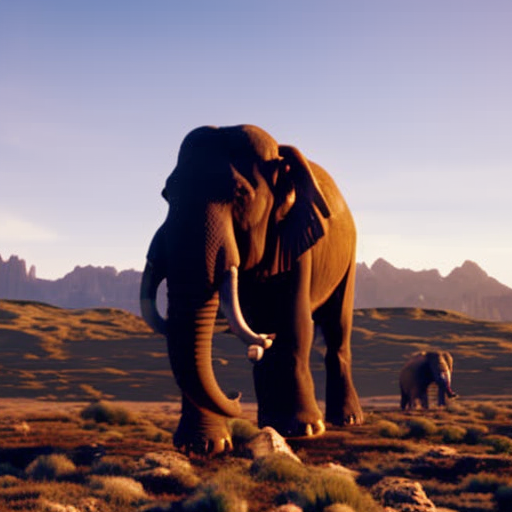Summary:
Prehistoric mammals refer to the various species of mammals that lived during the time period known as the prehistoric era. These mammals existed before the rise of humans and were part of a diverse and fascinating group of creatures. They ranged in size from small, rodent-like animals to massive, elephant-like creatures. Prehistoric mammals played a crucial role in the evolution of life on Earth and provide valuable insights into the history of our planet.
Diversity of Prehistoric Mammals:
Prehistoric mammals were incredibly diverse, with species inhabiting various ecosystems around the world. They evolved and adapted to different environments, resulting in a wide range of body shapes, sizes, and lifestyles. Some of the most well-known prehistoric mammals include the woolly mammoth, saber-toothed cat, giant ground sloth, and the giant beaver.
Evolutionary History:
Prehistoric mammals evolved from their reptilian ancestors during the Mesozoic Era, which lasted from approximately 252 to 66 million years ago. They first appeared around 225 million years ago and gradually diversified over time. The extinction of the dinosaurs at the end of the Cretaceous period opened up new ecological niches for mammals to exploit, leading to their further diversification and success.
Adaptations and Features:
Prehistoric mammals developed various adaptations that allowed them to thrive in different environments. Some evolved sharp teeth and claws for hunting, while others developed specialized teeth for chewing plants. Many prehistoric mammals had thick fur or hair to keep them warm in cold climates. Some species, like the woolly mammoth, even had long, curved tusks that were used for defense and foraging.
Extinction:
Despite their success and diversity, many prehistoric mammals eventually went extinct. The exact reasons for their extinction are still debated among scientists, but several factors likely played a role. Climate change, habitat loss, competition with other species, and the arrival of humans are all believed to have contributed to the decline and eventual extinction of many prehistoric mammals.
Importance of Prehistoric Mammals:
Studying prehistoric mammals is crucial for understanding the history of life on Earth. These creatures provide valuable insights into the processes of evolution, adaptation, and extinction. By examining their fossil remains, scientists can reconstruct ancient ecosystems and learn about the interactions between different species. Prehistoric mammals also serve as a reminder of the fragility of life and the importance of conservation efforts to protect the biodiversity of our planet.
Conclusion:
Prehistoric mammals were a diverse and fascinating group of creatures that lived before the rise of humans. They evolved and adapted to various environments, leaving behind a rich fossil record that helps us understand the history of life on Earth. Despite their eventual extinction, prehistoric mammals continue to captivate our imagination and provide valuable insights into the natural world. By studying these ancient creatures, we can better appreciate the interconnectedness of all living things and the importance of preserving Earth’s biodiversity.












